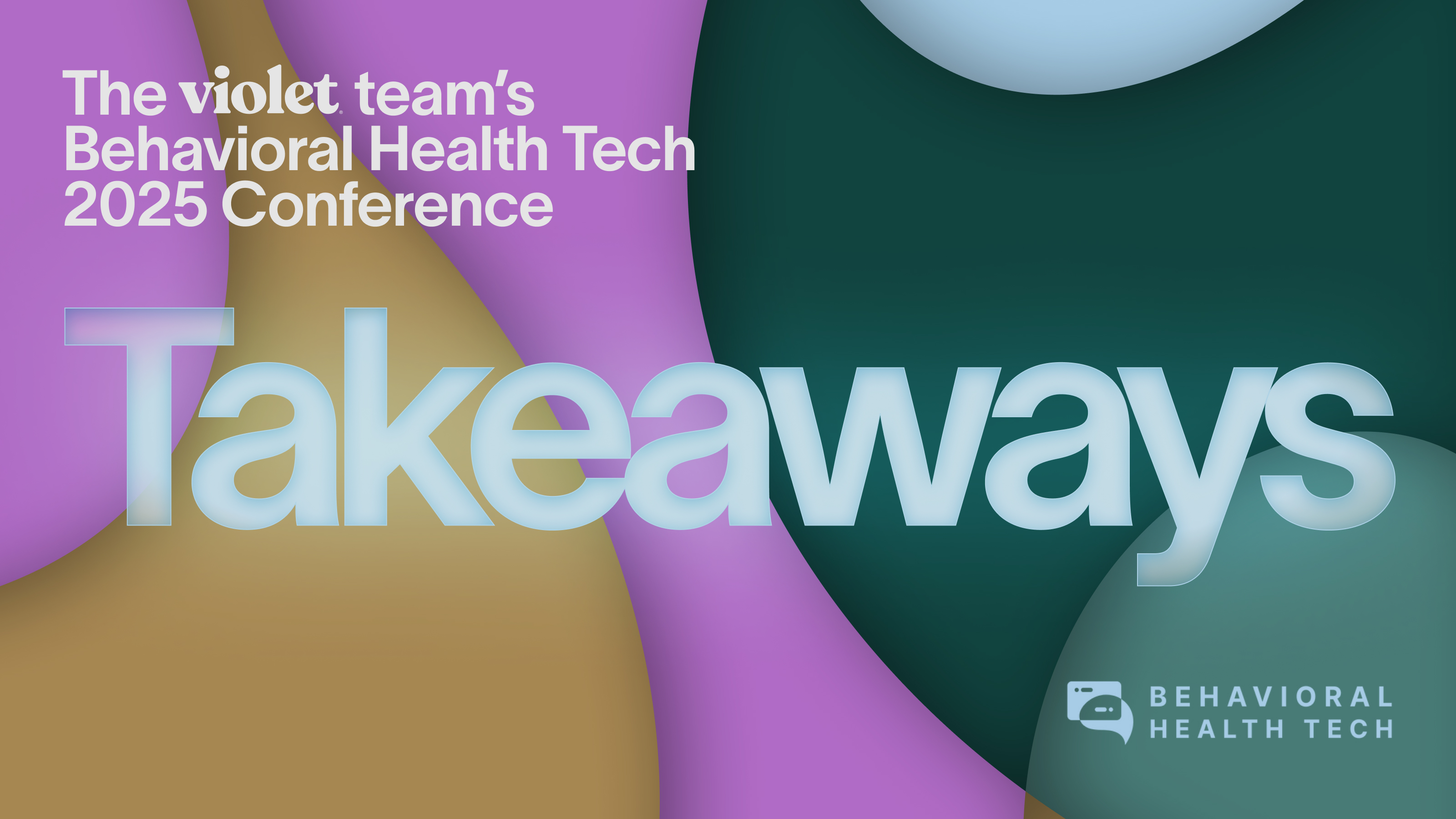Usually when we think of the things that influence a person’s health, we think of the medical factors reviewed during a clinical intake process. Family history of disease, whether or not a person is a smoker, symptoms of depression, etc. are routinely screened.
However, there are a myriad of external factors that impact an individual’s overall health that we may not immediately consider. These are known as social determinants of health (SDOH), which are the wide-ranging social, economic, and community conditions that affect quality of life and drive differences in health and well-being.
SDOH encompass all aspects of a person’s life and can be grouped into six domains:
- Economic stability
- Social and community context
- Food and nutrition
- Education access and quality
- Neighborhood and built environment
- Health care access and quality
These six categories directly impact health outcomes, including life expectancy, health care expenditure, and mortality rates. This means that a big part of a person’s health is not controlled by their health care—it’s determined by factors that are beyond their control.
More importantly, SDOH differentially affect individuals by race, ethnicity, gender, sexual orientation, ability, and social class.
Why do social determinants of health matter?
Let’s start with an example. Say there are two adult, cisgender men, John and Jack. Physically, they are nearly identical, but they live in environments with vastly different social determinants of health. For the purposes of this example, we’ll consider the economic stability, health care access, and neighborhood for each person.
- John has a full-time job and gets health insurance through his employer. He is able to afford housing in a well-maintained building in a neighborhood that has several grocery stores, farmers markets, restaurants with healthy options, as well as a large park. John often cooks healthy meals, he’s able to walk or jog in the park, and if he does get sick, he’s able to get prompt, reliable health care.
- Jack is a contingent worker and lives paycheck-to-paycheck, unable to afford health insurance. Jack’s housing situation is a constant source of stress: whether or not he will be able to make rent, repeated issues with his building and landlord, and fear of his room being broken into. His neighborhood has little to offer beyond fast food restaurants and corner store groceries selling processed foods. There are no parks or green spaces nearby, and he does not feel it’s safe to jog in his neighborhood. Jack often delays seeing a doctor because of his lack of insurance.
After comparing these two imaginary people, we can draw a few conclusions:
- John has a healthier lifestyle than Jack. But that’s because John has access to things that promote a healthy lifestyle: reliable health care, nutritious food, and safe green spaces.
- Jack is aware of things he could do to be healthier (e.g. jogging, seeking primary care) but his situation makes it considerably more challenging.
- The social determinants of health in John’s world contribute to a sense of stability and well-being. The social determinants of health in Jack’s world create instability and stress.
Racism, social determinants of health, and BIPOC communities.
The example of John and Jack was purposely simplified to show how certain external conditions can greatly impact a person’s health, and it didn’t take into account either individual’s cultural, racial, or ethnic backgrounds. However, a person’s identity is of the utmost importance.
Social determinants of health are estimated to account for up to 80% of modifiable contributors to disease, but SDOH are not fairly distributed across communities—they’re shaped by current and historical discrimination. As a result, BIPOC communities—particularly Black and Latine/x communities—end up lacking opportunities and resources to protect, improve, and maintain health. But let’s make one thing clear: it is racism that creates health disparities, not race.
As Mark Rastetter, MD of Ohio State Wexner Medical Center points out, “[Racism] drives the inequities in housing, income and education, especially among communities of color. In many ways, it’s not just one of the social determinants—it’s the underlying structural determinant that sets the stage for all other social determinants. Racism plays a fundamental role in someone’s social determination of health.”
Social determinants of health by category.
SDOH can be broken down into six domains that encompass where and how a person lives, works, and ages, the quality of essential resources available to them, and the ways they interact with their community.
Economic stability.
An individual's economic stability is determined by several factors, including:
- Employment status
- Income
- Cost of living and expenses (including medical expenses)
- Debt
- Socioeconomic status
- Economic supports available
Economic stability influences nearly all aspects of a person’s life: where they live, their basic necessities like groceries, the type of education they can afford, as well as their health care (including whether or not they can afford health insurance).
It’s important for clinicians to factor a patient’s economic stability into the overall picture of their health, as it can directly impact their health-related behaviors. For example, when a person routinely delays seeking health care because they don’t have health insurance they’re more likely to miss a potentially serious health issue. This can result in trips to the emergency room, high medical costs, and later-stage interventions.
Social and community context.
Social determinants related to community include positive things that can promote a healthy lifestyle, including:
- Friends and family
- Social support networks
- Community participation and engagement
- A sense of purpose and belonging
These factors can also negatively impact a person’s health, including:
- Discrimination and racism
- Demands of care for others
- Interpersonal conflict and exposure to violence
- Community policing and justice policies
Positive social support networks serve as a powerful protective factor, whether it’s by helping cope and manage stress, providing guidance, or helping a person recover both physically and mentally. Conflict and violence have the opposite effect, creating stress and making coping and recovery considerably more challenging.
Clinicians should consider the risk factors as well as the protective factors that present themselves in their patient’s lives—with an emphasis on the protective factors. Your care team can also be a valuable resource in helping patients find community social support services they may not be aware of, both for their physical and mental health needs.
Food and nutrition.
The food and nutrition category is determined by:
- Quality and availability of nutritious food
- Cost of accessing food
- Food security
A person’s access to healthy food, and whether or not they experience food insecurity, has a major impact on their overall health and longevity. Diet and nutrition directly influence health outcomes like the incidence and severity of certain diseases.
Areas that have limited access to fresh, affordable, nutritious food (aka food swamps and food deserts) create a major barrier to making healthy food choices. As a result of racism and discrimination, BIPOC and LGBQ and/or TGNC individuals are more likely to live in neighborhoods where nutritious food is harder to access.
Instead of solely focusing on deficits in diet, clinicians can opt for a strengths-based approach to care. This helps better engage the patient, while providing a clearer picture of the larger social contexts that affect their food and nutrition.
Education access and quality.
This category contains all aspects of a person’s education, including:
- Early childhood education and development
- Level of literacy and language
- Level of education (high school, college, etc.)
- Occupational training and experience
In the U.S., the term “education'' tends to be shorthand for the highest level of education a person has attained, but this category can also influence a person’s health care experience. For example, if an individual does not fluently speak English and their doctor only provides information in English, it can have a major impact on the outcome of their care.
A person’s education can also determine the extent to which they can effectively seek out and use information related to maintaining their health. Therefore, clinicians should be mindful that an individual’s health literacy, and “common sense” regarding their health-related behaviors, are shaped by their SDOH.
Health care access and quality.
This category encompasses all aspects of a person’s health care, including:
- Access to health care
- Access to primary care
- Health insurance coverage
- Health literacy
Whether or not a person has access to health care, and the quality of the care they get can have direct impacts on longevity and burden of disease. It can also indirectly impact health-related knowledge, attitudes, and behaviors.
Aside from cost, some of the major barriers to accessing health care in the U.S. include: health insurance coverage, lack of culturally competent health care providers, proximity to providers, and transportation.
Individuals may also be apprehensive about interacting with the health care system because of their own past experiences with discrimination, racism, and/or the historical injustices faced by people in BIPOC, LGBQ, and TGNC communities. This is why clinicians should avoid assuming difficulties in adherence or communication are due to a lack of motivation, and focus instead on opening a mindful dialogue with their patients.
Neighborhood and built environment.
It’s important to consider all aspects of a person’s environment, including:
- Current housing situation
- Transportation quality and accessibility
- Walkability of the area
- Air and water quality
- Neighborhood safety (crime, violence, policing)
- Resources including parks, playgrounds, and services
The health and safety of a person’s environment directly impacts their well-being, but once again, this SDOH is unfairly distributed across communities. Aside from some of the overlapping inequities that pertain to economic status, social support, food, and health care, risks like living with air pollution and lack of clean water are much more prevalent in BIPOC communities. Much of this correlation is due to historical practices like redlining.
In each patient interaction, clinicians should help their patients self-identify protective factors pertaining to their neighborhood and built environment, and work together to find feasible resources.
How clinicians can address social determinants of health.
It’s important for clinicians to take a 360º view of a patient’s health, identifying how SDOH show up in their lives, and understanding what they can and cannot control. Social determinants of health can be invisible, and patients may not know how to bring them up in a clinical context.
In the example illustrated earlier, Jack lived in a food swamp and did not feel safe jogging around his neighborhood. Therefore, a doctor should consider his situation and provide interventions accordingly.
If Jack’s doctor assumes that he has easy access to fresh produce and green spaces but is just not using them, the advice might simply be eat better and exercise more. If Jack’s doctor screens for SDOH by starting a dialogue with Jack, they can work together to come up with a realistic intervention that Jack can use.
What you can do to get started today.
Although change is required at a structural level in order to fully address the health disparities caused by the unequal distribution of SDOH, change on an interpersonal level can start as soon as your next patient interaction. By avoiding assumptions, starting a mindful dialogue, and acknowledging the impact of SDOH on BIPOC, LGBQ, and TGNC communities, you can build mutual trust and identify the best way to support your patient’s unique situation.
Book a demo with Violet to learn how our standardized cultural competence upskilling and credentialing platform can mutually benefit your care delivery team as well as your patients. Understanding and addressing the overlapping impacts of social determinants of health is an ongoing process, and it’s key to building an equitable health care system.
.jpg)
.svg)





.png)



.png)

.svg)



.svg)

